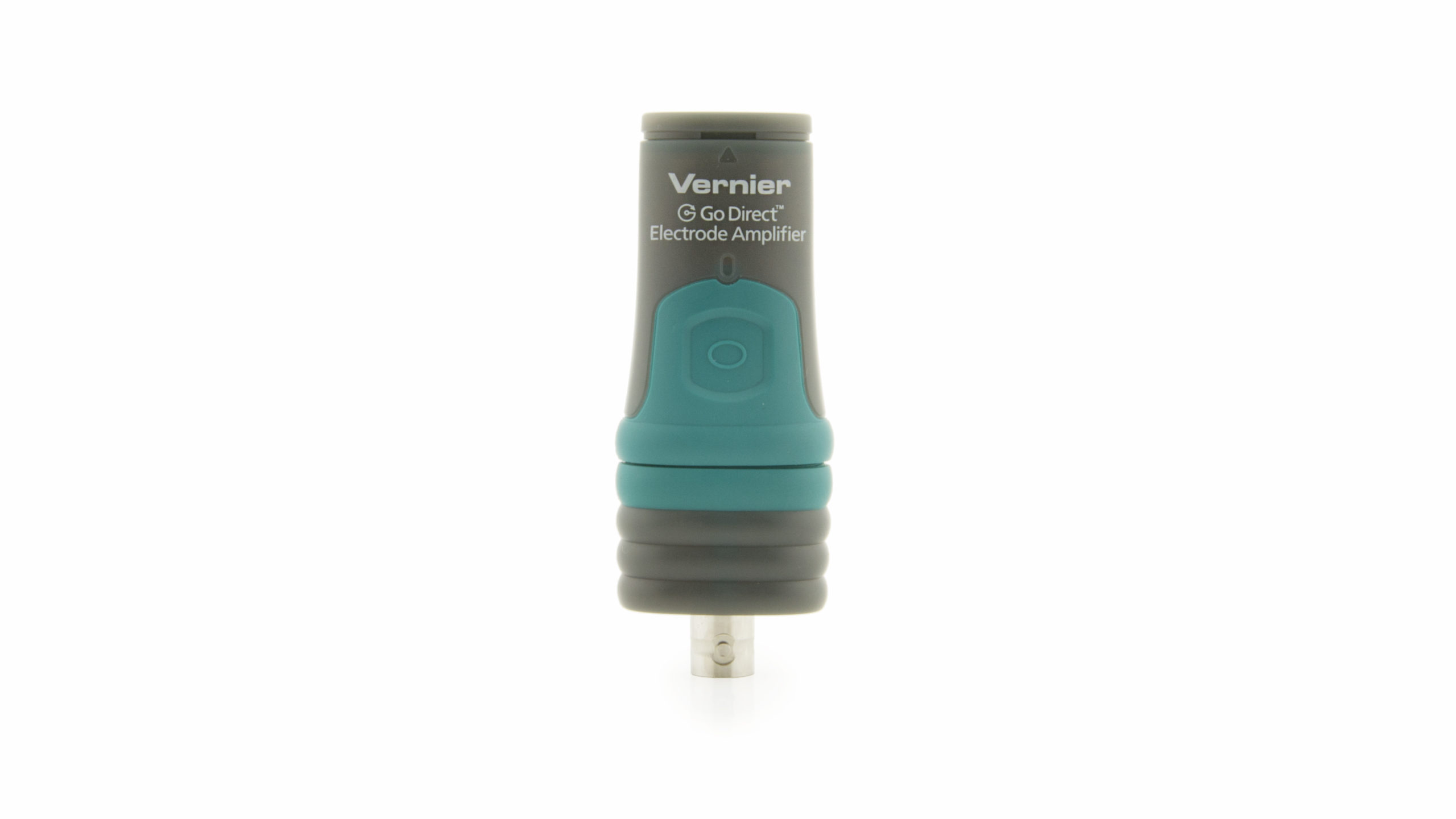Troubleshooting
General: Press the power button on the sensor to turn it on. Connect your sensor as described in the Getting Started instructions for your device. (The green LED will flash to indicate the sensor is connected.)
- Primary Test: Connect an electrode (such as an ORP or pH) to the Electrode Amplifier and connect the Electrode Amplifier to your platform. Start the data-collection program. Place the electrode in a standard solution of known value and confirm that the readings are within range.
- Secondary Test: Confirm that the BNC connection is secure.
Additional Troubleshooting
- Can I use my third-party ISE with my Vernier equipment?
- How do I change the displayed measurement channel on my Go Direct Electrode Amplifier or ISE Amplifier?
- What is the difference between the Go Direct Electrode Amplifier (GDX-EA) and the Go Direct ISE Amplifier (GDX-ISEA)?
- Go Direct sensor does not connect to LabQuest 2 via Bluetooth.
- How do I replace the battery in a Go Direct Wand-Style Sensor?
- Troubleshooting Bluetooth Connections with Go Direct Sensors
- What can I do if a Go Direct sensor's Bluetooth LED flashes red and green when I try to connect to it and the connection fails?
- Will my device work with Go Direct Sensors via Bluetooth?
- How do I know if my LabQuest will work with Go Direct Sensors and Go Wireless devices?
Specifications
- Units: pH or mV
- Input range (mV): ±1000 mV
- Input range (pH): 0 to 14 pH
- Accuracy with new electrode
⚬ ORP electrode (mV): ±20 mV
⚬ pH electrode (pH): ±0.2 - Resolution: 0.01 mV
- Connections:
⚬ Wireless: Bluetooth® v4.2 (wireless range 30 m unobstructed)
⚬ Wired: USB 2.0 full speed - Battery: 300 mA Li-Poly
⚬ Battery Life (single, full charge): ~24 hours continuous data collection
⚬ Battery Life (lifetime): 2 – 5 years (typical)
Calibration
Calibrate? It depends on the electrode that is connected. If you have an electrode connected to read Voltage, calibration is disabled. If you have an electrode connected to read pH, you may perform a two point or three point calibration. For more information on calibration, see How do I calibrate my sensor?
Battery Troubleshooting
- If the sensor can be turned on when connected by USB but not when disconnected from USB, the battery either needs charging or has reached its end of life and can no longer hold a charge.
⚬ First, try charging the sensor for several hours. - If the sensor still won’t turn on when disconnected from USB, try swapping the battery with a working sensor to see if the problem follows the battery or stays with the sensor.
⚬ If the problem stays with the sensor, the battery is probably not the issue.
⚬ If the problem follows the battery, the battery has likely reached its end of life. - If you intend to use this sensor wirelessly, its battery will need replacing.
Go Direct® 300 mAh Replacement Battery (GDX-BAT-300 ) - See How do I replace the battery in a Go Direct Wand-Style Sensor? for more information (including a video).
Rechargeable batteries are covered by a one-year warranty.
Batteries should last two to five years in typical use.
Related Products
- Micro USB to USB-C Cable (
CB-USB-C-MICRO ) - Go Direct® Charge Station (
GDX-CRG ) - Electrode Support (
ESUP ) - Go Direct® Sensor Clamp (
GDX-CLAMP ) - Go Direct® ORP BNC Electrode (
GDX-ORP-BNC ) - Go Direct® pH BNC Electrode (
GDX-PH-BNC ) - Go Direct® Flat pH BNC Electrode (
GDX-FPH-BNC ) - Go Direct® Glass-Body pH BNC Electrode (
GDX-GPH-BNC ) - Electrode Amplifier (
EA-BTA )
Replacement Parts
- Go Direct® 300 mAh Replacement Battery (
GDX-BAT-300 ) - Micro USB Cable (
CB-USB-MICRO )
Note: The Go Direct Electrode Amplifier is a replacement part for the following sensors:
- Go Direct® pH Sensor (
GDX-PH ) - Go Direct® Tris-Compatible Flat pH (
GDX-FPH ) - Go Direct® Glass-Body pH Sensor (
GDX-GPH ) - Go Direct® ORP Sensor (
GDX-ORP )

